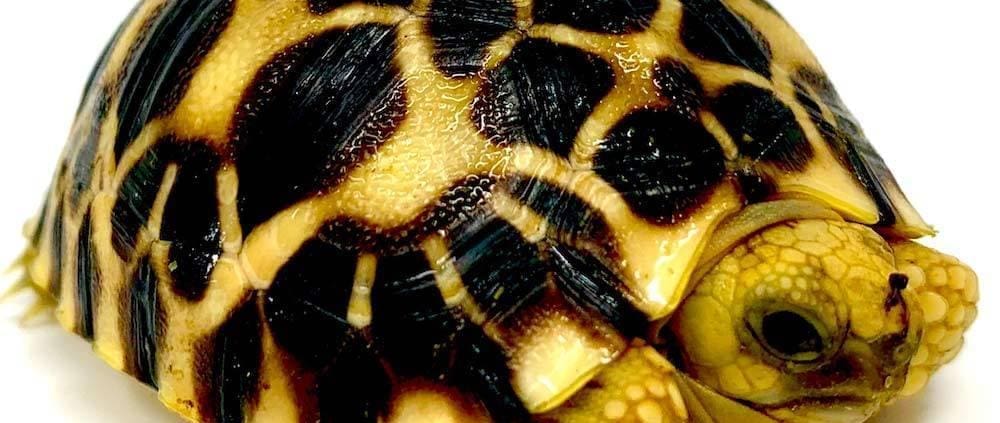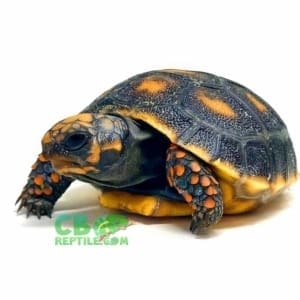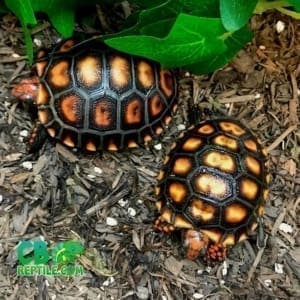
Popular Medium-Sized Tortoises: A Happy, Captive-Bred Keeper’s Guide

Tortoises for sale
Before we dive into species, a quick note on sizing: “medium” in tortoise terms usually means adults in the 8–14 inch shell length range, with moderate space needs and a manageable diet. They still require thoughtful setups, steady warmth, and reliable UVB exposure—but with good planning, they fit beautifully into many homes and climates.
Greek Tortoise (Testudo graeca)
Charming and classic, Greek tortoises usually mature in the 7–10 inch range depending on locality. They prefer a drier, well-ventilated habitat with a basking zone near 95°F, ambient daytime temps in the upper 70s to mid-80s°F, and a quality UVB source. Offer multiple hides and diggable substrate. Diet should be high-fiber weeds and leafy greens with very limited fruit. Greeks are personable explorers once they feel secure.
Hermann’s Tortoise (Testudo hermanni)
A Mediterranean favorite, Hermann’s often land at a comfortable 7–10 inches. Provide a basking area around 95°F, a cooler zone in the mid-70s to low-80s°F, and consistent UVB. Their diet mirrors other Med species: broadleaf weeds and varied leafy greens. Good ventilation and a mostly dry environment help prevent shell and respiratory problems. Curious and bright, they thrive with enrichment such as logs, shrubs, and sight breaks.
Marginated Tortoise (Testudo marginata)
With their dramatic, flared rear scutes in adulthood, marginated tortoises are showstoppers. Many adults fall into a solid medium size, though some lines push larger—ask your breeder about expected adult dimensions. Care is similar to Greeks and Hermann’s: hot basking (~95°F), dry and clean substrate, generous UVB, and a weed-heavy diet. Provide sturdy perimeter fencing outside; they’re enthusiastic walkers with a knack for route-finding.
Red-footed Tortoise (Chelonoidis carbonarius)

A tropical medium species with big personality and colorful accents, red-foots often grow 10–14 inches. They appreciate a warmer, slightly humid environment: basking around 90–95°F, ambient 80–85°F, and humidity in the 60–80% range with excellent airflow. Diet is diverse: primarily greens and weeds, with modest fruit and occasional approved protein depending on your vet’s guidance. When kept warm, hydrated, and enriched, red-foots are engaging, confident companions.
Yellow-footed Tortoise (Chelonoidis denticulatus)
Close cousins to the red-foot, yellow-foots wear subtler tones and can edge slightly larger, yet many stay in the medium bracket for years. They favor steady warmth, higher ambient humidity, and strong UVB access. Provide shaded retreats, large water dishes for soaking, and clean substrates that don’t stay soggy. Their diet leans leafy and fibrous with carefully controlled extras—think “forest edge” foods delivered sensibly.
Leopard Tortoise (Stigmochelys pardalis) — smaller localities/lines
Leopards are famous for striking patterns and generally calm demeanors. Many lines trend large, but some localities and selectively bred lines remain closer to medium for long stretches of adult life. They prefer warm, relatively arid setups with basking near 95–100°F, drier air, and a grass-heavy diet. If your heart is set on a leopard with medium aspirations, partner with a breeder who can speak to lineage, typical growth rates, and adult expectations.
Burmese Star Tortoise

Stars stay modestly sized and are visually dazzling, but they reward consistency more than experimentation. Provide steady warmth (basking ~90–95°F), stable humidity without dampness, and draft-free ventilation. They’re best for keepers who can maintain parameters with minimal fluctuation. Captive-bred Stars settle far more readily than imports, making breeder choice especially important here.
Elongated Tortoise (Indotestudo elongata)
Typically 10–12 inches, elongated tortoises enjoy warm, shaded environments with higher ambient humidity and ample cover. Think leaf-litter texture, hides, and easy access to fresh water. Basking can be less intense than arid Med species; prioritize microclimates and retreats to help them thermoregulate comfortably. Their gentle temperament and elegant profile make them a rewarding choice for keepers who love a forest vibe.
Medium-Sized Care Snapshot: Setups That Spark Success
- Space & layout: Floor space beats height. Offer multiple hides on both warm and cool ends, plus visual barriers to reduce stress.
- Heat & UVB: Basking zones typically ~90–95°F (species dependent), cool zones mid-70s to low-80s°F, and quality UVB 10–12 hours/day.
- Substrate: For Mediterranean species: dry, clean, diggable blends with excellent airflow. For tropical species: retain humidity without staying wet; refresh frequently.
- Diet: Emphasize weeds, grasses, and leafy greens; keep fruit modest (especially for Med species). Avoid high-protein, high-sugar items.
- Hydration: Fresh water daily; hatchlings and tropical species benefit from routine soaks. Even arid species need reliable access to clean water.
- Hygiene: Spot-clean daily; deep-clean on a schedule. Good hygiene supports clear eyes, smooth growth, and eager appetites.
When the time is right to welcome a new shell into your life, explore a responsibly sourced tortoise for sale from a team that cares. You can also connect with knowledgeable tortoise breeders who’ll happily answer questions about adult size, climate fit, and enclosure planning.
